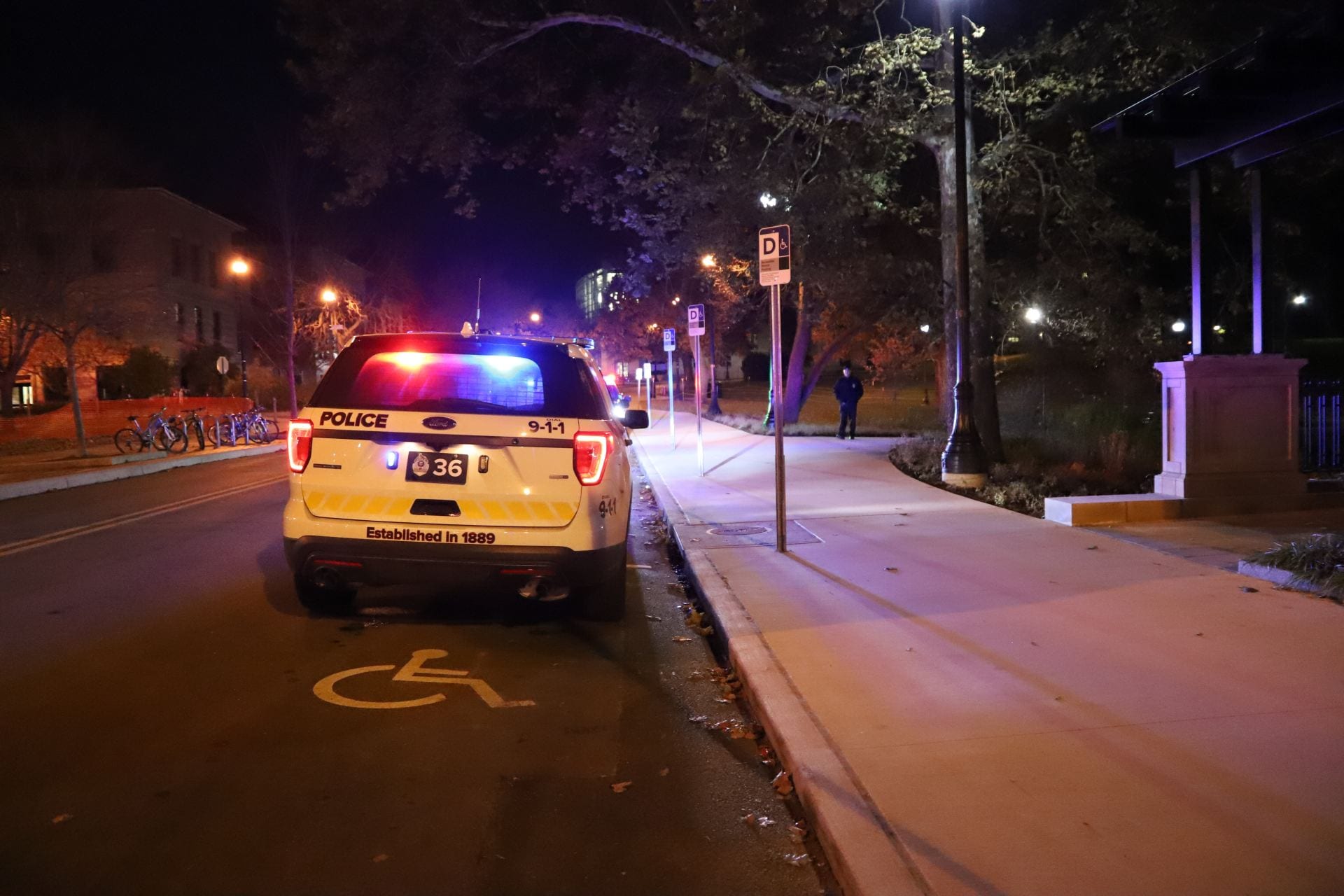
The map of potential improvements to road safety. Courtesy of Katie McDevitt
The University Area Commission is working to make the University District safer.
After concerns rose about traffic and pedestrian safety, the Planning and Development Committee of the UAC began to document a paper map of changes. Commissioner Katie McDevitt said she has started to transfer this information online, looking to offer solutions to road safety issues. The map, currently in its first stages, is meant to document changes the commission wants to be made by the city of Columbus, such as improvements to crosswalks, sidewalks and bike lanes.
“As we work with the maps, we’ll see the problems and figure them out and be able to leverage them in the future,” McDevitt said.
The Vision Zero campaign, a program dedicated to “ending crash-related fatalities and serious injuries on our streets, has a map of accidents around the city, including the University District. Four fatal crashes, 54 serious injury crashes and 290 “less severe crashes” involving bicyclists, pedestrians and motorcyclists occurred between 2017 and 2021.
Maria Cantrell, the campaign’s coordinator, said the numbers are not complete, as many crashes do not get reported to the city.
“We need to focus on safety for every person whether they’re biking, driving in a vehicle, riding in a vehicle, walking, using a bus — prioritizing that safety first with a systems-wide approach,” Cantrell said. “This means, rather than expecting people to behave perfectly, we’re really looking to change how the transportation system works by influencing street design, laws [and] policies.”
McDevitt said she became increasingly aware of problems with pedestrian safety after a friend was struck by a car and left in a coma. This motivated her to travel around the district looking for potential problems, she said.
“I’m a runner. I’m literally zigzagging my way through the university area district and just going like, ‘Hmm, seems like kids are walking around here,’” McDevitt said.
Besides information derived from her own experience and other commissioners, McDevitt said she monitors issues reported to a Facebook page created by former commissioner and Ohio State English professor Lauren Squires.
Squires said the page, Nightmare on Summit St./4th St./Hudson St., is open to the public and is home to photos and videos of bicyclists having near-misses with vehicles and other crashes. Squires started the group in July 2021.
“People in the neighborhood, just in general, have a lot of concerns about the number of not only car crashes, but also the number of those incidents that involve pedestrians and involve cyclists,” Squires said.
Though McDevitt and Squires work independently, they share similar goals in trying to make their neighborhood safer for residents and students.
“It’s very frustrating to me that we have this environment that theoretically should be really great for getting around outside of a car,” Squires said, “Yet, cars are allowed to drive very aggressively and basically threaten the safety of everyone else.”
Squires said she was frustrated especially with the Summit and Fourth streets since she lives near the two. She believes there are still changes required to keep residents safe beyond the bike lanes.
“We need traffic calming and slower-moving traffic,” Squires said. “We need design elements on the streets that actually force drivers to pay attention to people outside of their cars.”
Squires said changes in the area should be a part of the Columbus’ Vision Zero campaign.
Cantrell said the city is working on modifications to help increase safety on these streets in the University District, especially on Summit and Fourth streets.
Cantrell said some of the possible and in-progress projects for the University District include changes to traffic signals and bump-outs or curb extensions, which shorten the time it takes to cross the street and increase the visibility of pedestrians.
Decisions involving traffic lights and speed limits are often left up to state or federal officials, outside of the city’s control, Cantrell said.
McDevitt said she is hoping to continue compiling suggestions from the community and include students in the conversation as the project continues.
“Whether you’re on a bike, whether you’re on a skateboard, whether you’re walking, you should be more safe than someone in a car,” McDevitt said. “I hope that we can provide the infrastructure and really think about the people that are unprotected by cars so that we can make this like an incredibly walkable, affordable, functional, safe place to live.”


